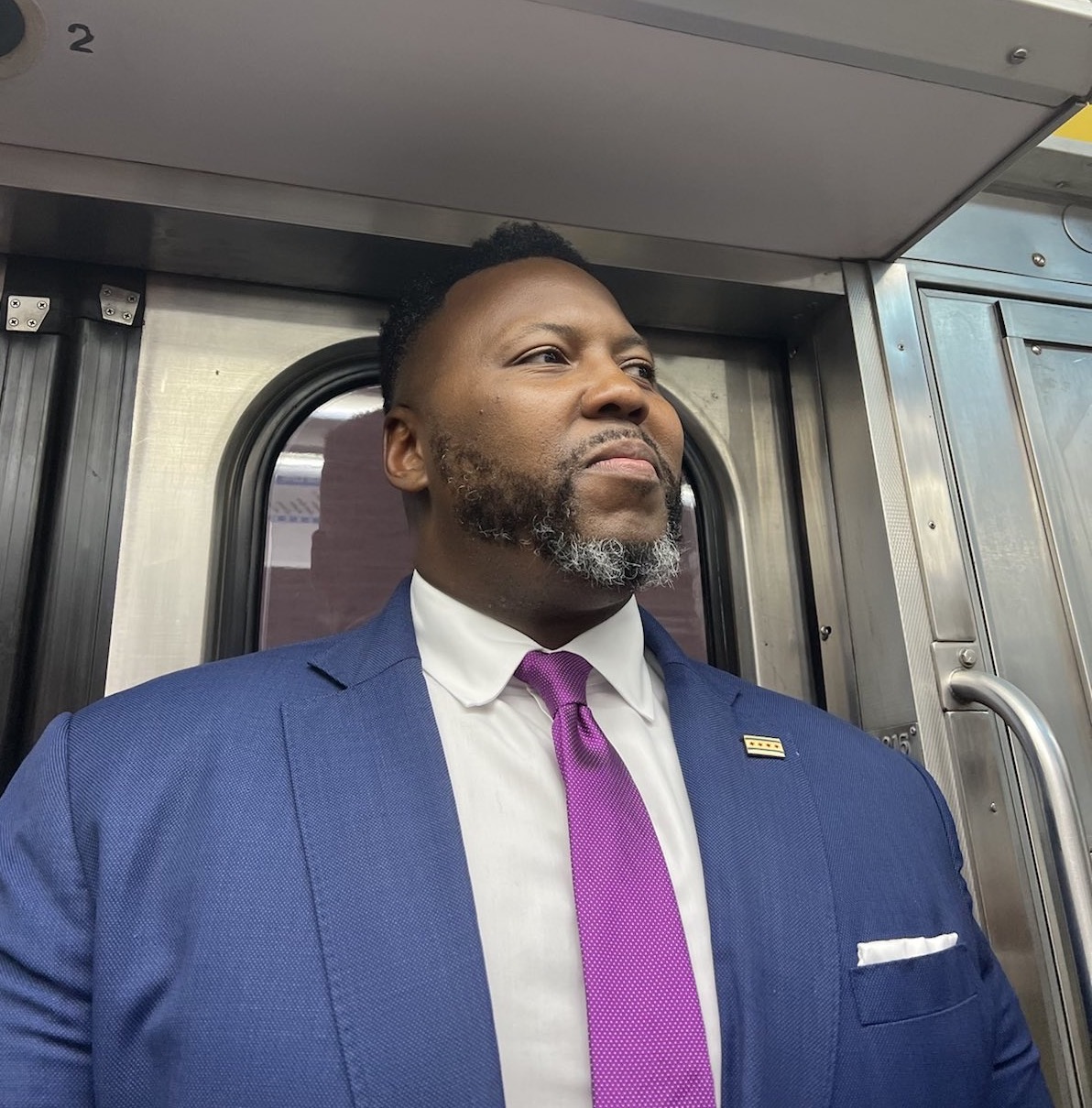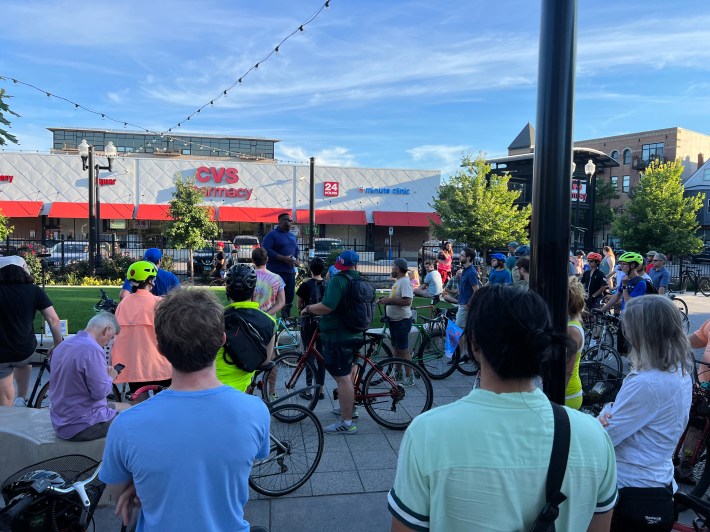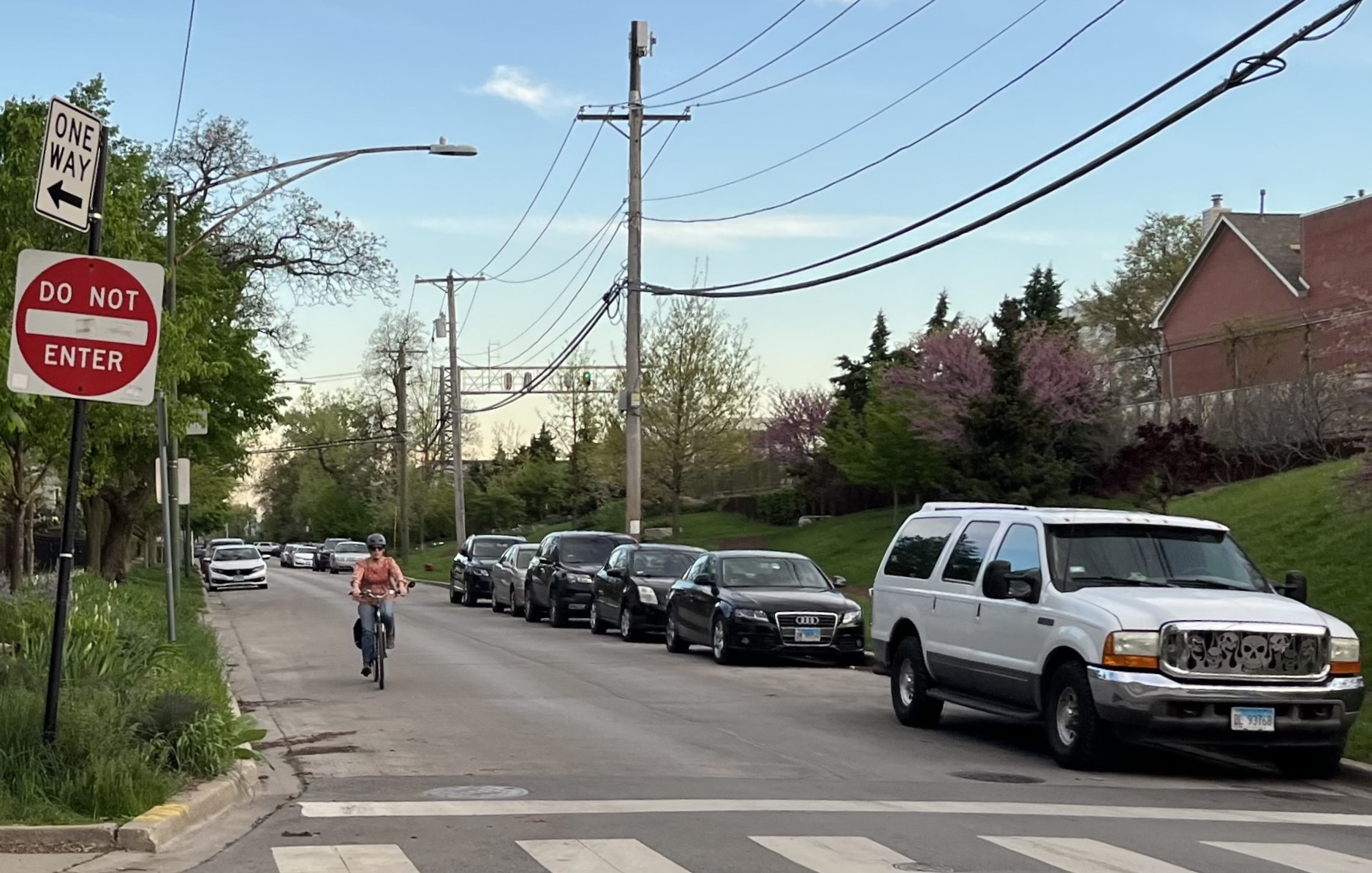Mayoral hopeful Kam Buckner releases transportation plan
2:18 PM CDT on September 28, 2022

Buckner rides the Red Line. Photo courtesy of the Kam Buckner campaign.
To help Chicago voters make an educated decision during the upcoming mayoral election, Streetsblog Chicago is running a series of articles on candidates' transportation platforms. Mayoral campaigns can contact SBC co-editor John Greenfield at jgreenfield[at]streetsblog[dot]org to share their candidates' positions on walking, biking, transit, traffic safety, and public space matters.
Illinois state representative Kam Buckner (26th), who is currently running for Chicago mayor, says he sees his mayoral platform as a love letter to the city. Buckner has gained the attention of sustainable transportation and safe streets advocates due to support he's voiced for pedestrian and cyclist safety and better CTA service, as well as showing up for rides and protests. Let’s take a closer look at Buckner’s recently released transportation platform.

Buckner’s transportation platform webpage states that safe, reliable public transportation is at the heart of public safety. Presumably the candidate puts pedestrian and cyclist safety falls under the category of public safety as well. If I were writing such a platform, I’d include stats on crashes within Chicago and why seriously reducing the number and severity of crashes is a public safety and public health issue. To Buckner’s credit, he cites "ghost buses", personal safety issues on the system, and inconsistent schedules as ways in which Chicagoans have suffered from the current administration’s underinvestment in transit. Buckner points to the 25 percent of Chicagoans who do not own a car as another reason to invest in public transportation and traffic safety.
Before sharing his plans to improve the CTA, Buckner cites his work to get 20 percent of the state’s motor vehicle fuel tax increase revenue dedicated to transit, 90 percent of which will come to Chicago. He claims no other legislator had been able to secure that level of funding increase in years. Buckner states he will work with the state and federal governments to invest in the CTA and make it the safe and reliable transportation system the city needs. He says he wants to use those funds to innovate, not continue the status quo.
How exactly would Buckner improve Chicago transit? There are four pillars under which Buckner lists solutions: Safety, Reliability, Affordability, and Built for the Future. (The language below is the Buckner campaign's with some light edits by Streetsblog.)
Safety
- CTA Transit Ambassadors trained in de-escalation techniques.
- Connect CTA video cameras to security personnel reliably and efficiently. Buckner notes that as it stands only some of the 32,000 cameras in the CTA system are equipped to relay footage in real time.
- Create a system to allow riders to text problems as they see them and have someone respond in real time.
- Restore CTA rides as part of the Chicago Police Department officers' beats. Work with unions and workers to make sure they have a safe and supportive working environment.
Reliability
- Improve bus service and frequency throughout the city and establish dedicated bus lanes for high ridership corridors.
- Modified bus routes based on lessons learned and the long delayed bus redesign study called for in the city’s 2019 New Transportation and Mobility Task Force
- Better connect the CTA to Metra, Pace, and other modes by implementing an integrated fare system that allows for riders to easily transfer between train, bus, and shared mobility options. Implement connections to CTA and Metra at key locations in the city, like those called for in the Union Station Master Plan, and a new connected station in the West Loop.
- Accelerate accessibility improvements, including ADA accessibility, ramps, and elevators, at train stations and bus stations throughout the city.
Affordability
- Institute fare capping so no rider pays more than the price of a monthly pass.
- Fully commit to equitable transit-oriented development that further prioritizes affordable housing while minimizing housing displacement.
- Expand innovative programs like the Fair Transit South Cook pilot, where metra trains run more often, are more affordable, and are better connected to CTA and Pace.
Great to join in on today’s I’m Late protest — thank you @commutersaction for organizing. Chicagoans want safe, reliable public transportation, and we know better is possible. pic.twitter.com/Y0fQm5tFYz
— Kam Buckner (@kambucknerchi) September 14, 2022
Buckner attending the I'm Late protest at CTA headquarters organized by Commuters Take Action on September 14.
Built for the Future
- Complete the 5.3 miles, $2.3 billion Red Line extension. While the Red Line extension is being built, ride-hail vehicles and van pools can support transportation in the impacted communities.
- Rebuild and expand the CTA Forest Park Blue Line branch as part of the larger reconstruction of the Eisenhower Expressway and reconnect communities that were disconnected by the highway. Trains on 70 percent of this branch go slower than they are designed to because of outdated rails.
- Electrify the CTA bus fleet, partnering with Pace to reduce costs and implement electrification faster.
- Create a new Metra line that connects McCormick Place, Union Station, the West Loop, and O’Hare – connecting massive job centers to neighborhoods and workers.
- Institute a city ordinance to create a capital transit infrastructure commission to set the course for federal and state allocations for the next decade.
- Invest in new high-quality bus and rail lines where new development and currently inequitable access merit them – while stopping wasteful projects.
- Expand reliable, accessible transit options on CTA for Chicago Public Schools and Chicago City Colleges students. Buckner states existing discounted fares do not go far enough.
All in all Buckner has a good transit plan. It’s not groundbreaking but he sees the value and importance of public transportation. Too many Chicago politicians ignore transit, when many residents would be onboard with a variety of improvements. I especially like the goal around creating bus lanes for high-ridership bus lines. I’m continuously frustrated that in 2022 Chicago’s buses consistently languish in traffic mostly created by solo drivers. At a minimum, high-ridership bus lines should be prioritized for bus-only lanes, transit signal priority, and all-door boarding. By giving a higher number of Chicagoans fast, efficient bus service, these strategies can help build support for more bus-priority streets.
I’m not a huge fan of Buckner’s idea to use ride-hail and van pools as a stopgap while the Red Line extension is being built. The city should prioritize speeding up existing bus routes that connect Far South Side residents to the 95th Red Line station and Metra stations within the area. The city could perhaps fund an increase in Metra service on the Far South Side during the project.
Stay in touch
Sign up for our free newsletter
More from Streetsblog Chicago
Due to incredible support from readers like you, we’ve surpassed our 2023-24 fundraising goal
Once again, the generosity of walk/bike/transit boosters is fueling our reporting and advocacy.
Which Metra corridor would become more bike-friendly and greener under a new plan? Ravenswood!
Thanks to plans to convert little-used parking spaces, the avenue is slated to get a new bike lane, and the Winnslie Parkway path and garden will be extended south.
They can drive 25: At committee meeting residents, panelist support lowering Chicago’s default speed limit
While there's no ordinance yet, the next steps are to draft one, take a committee vote and, if it passes, put it before the full City Council.



